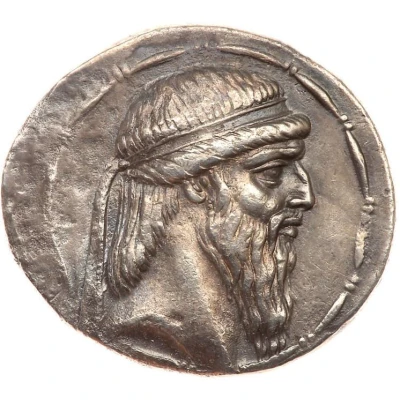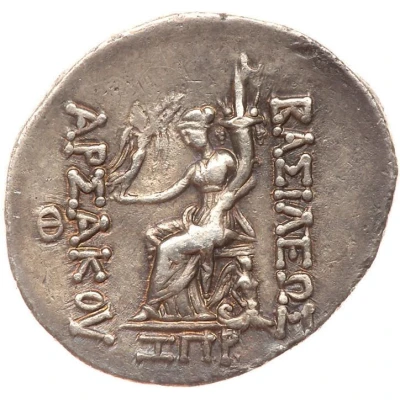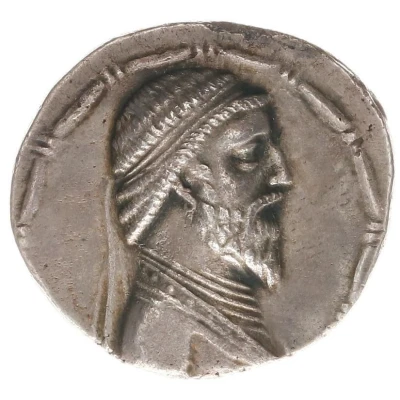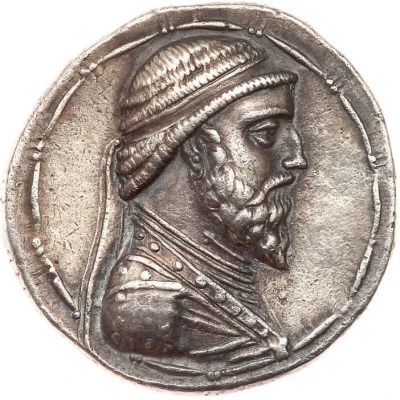
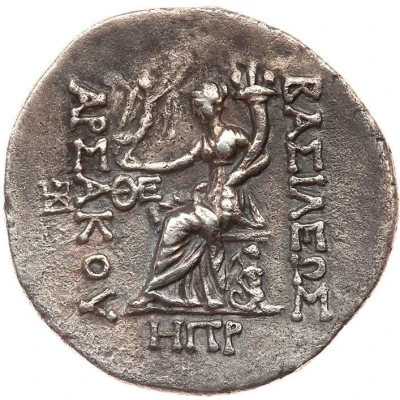

© The New York Sale
Tetradrachm - Artabanus I 188 125 BC
188 (125 BC) year| Silver | 15.73 g | - |
| Issuer | Parthian Empire (Parthian Empire (247 BC - 224 AD)) |
|---|---|
| King | Artabanus I (𐭍𐭐𐭕𐭓) (127 BC - 123 BC) |
| Type | Standard circulation coin |
| Year | 188 (125 BC) |
| Calendar | Seleucid era |
| Value | Tetradrachm (4) |
| Currency | Drachm (247 BC-224 AD) |
| Composition | Silver |
| Weight | 15.73 g |
| Shape | Round (irregular) |
| Technique | Hammered |
| Orientation | Coin alignment ↑↓ |
| Demonetized | Yes |
| Updated | 2024-10-10 |
| Numista | N#415317 |
|---|---|
| Rarity index | 100% |
Reverse
Demeter seated left, holding Nike and cornucopia, winged tritoness supporting throne, monogram to outer left, monogram to inner left, date in exergue.
Script: Greek
Lettering:
ΒΑΣΙΛΕΩΣ ΑΡΣΑΚΟΥ
ΘΕ
ΗΠΡ
Translation: The king Arsaces.
Interesting fact
One interesting fact about the Tetradrachm - Artabanus I 188 (125 BC) coin from the Parthian Empire is that it features a unique blend of Iranian and Greek influences in its design. The coin's obverse side depicts a portrait of King Artabanus I, while the reverse side shows a seated goddess, likely Artemis, with a crescent moon and a star above her head. This fusion of Persian and Greek elements reflects the cultural exchange and syncretism that occurred during the Parthian Empire's rule, which spanned across present-day Iran, Armenia, Azerbaijan, and parts of Turkey and Iraq.
